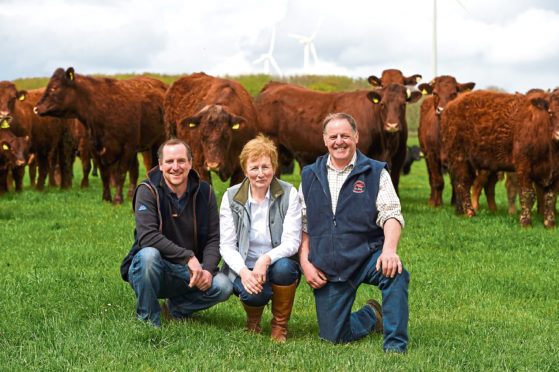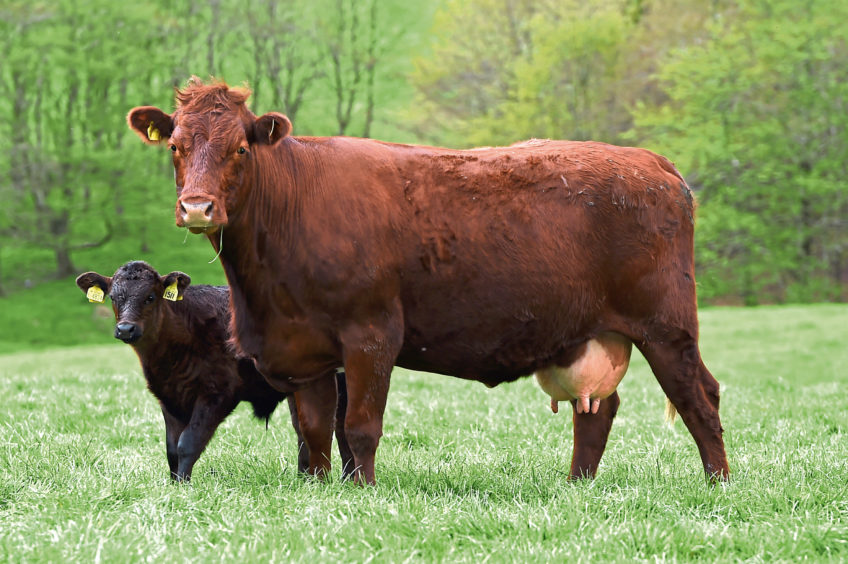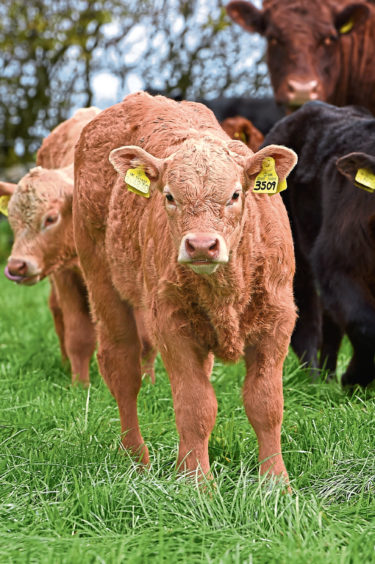A selective breeding process and a close eye on the market are key drivers behind the success of North Bethelnie Farm, near Oldmeldrum.
The 500-acre all-grass farm, which is set to host the Scotland’s Beef Event on Thursday May 30, is run by Robbie and Barbara Milne and their son James.
The farm is home to a herd of 340 Salers and Salers cross cows, as well as a flock of 200 Continental cross ewes.
The family recently expanded its herd and has plans for further expansion later this year – 64 heifers are due to calve in November and 28 heifers were put to the bull this spring.
“We calve heifers in November, which gives them time to recover from their first calving before joining the January herd, while cows are calved in two batches from January to mid-February and April to the end of June,” said Robbie.
“We spend more time watching than helping.
“The aim is to get calves on the ground without any assistance.”
He said the farm operated a strict culling policy. While a January cow or heifer may be allowed to slip into the April-calving herd, they are only given one more chance to get in-calf, and if they are found empty they are culled. Likewise, anything found empty in the April herd is also culled.
The Milnes’ move to Salers started in the late 1990s when the family bought a batch of Salers cross heifers.
“Our herd was a Heinz 57 variety before that and we were having calving problems,” added Robbie.
“The Salers are easily calved and good mothers with plenty of milk and the herd is now 99% Salers or Salers cross. It also makes it easier to select sires to suit a more uniform bunch of cows of the same breed.”
Cows are wintered indoors on silage, straw and draff from the nearby Glengarioch distillery. Soya is added at one third of a kg per cow per day, three weeks before calving and continued afterwards to improve colostrum.
All cows are crossed with Charolais bulls, which the Milnes source from France, and Aberdeen-Angus bulls, alongside Salers, are being used on heifers for ease of calving.
Robbie said more use was being made of the Aberdeen-Angus in a bid to achieve a modest reduction in cow size, and benefit from the premium for finished Angus cattle.
Most steers are finished on the farm at 14-16 months and sent to Kepak McIntosh Donald in Portlethen, however the family plans to sell more stores.
“As the cow numbers increase we will be finishing less. We are moving towards (selling) suckled calves,” said Robbie.
On hosting next week’s Scottish Beef Association event, he said: “We will learn as much from the event as visitors coming to the farm on the day.”


